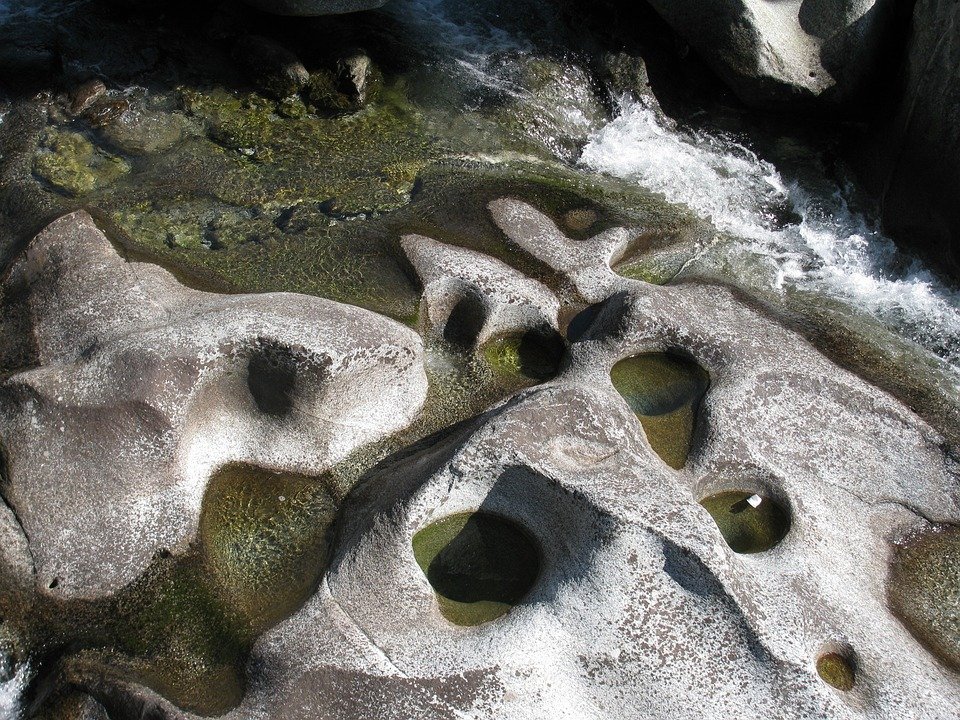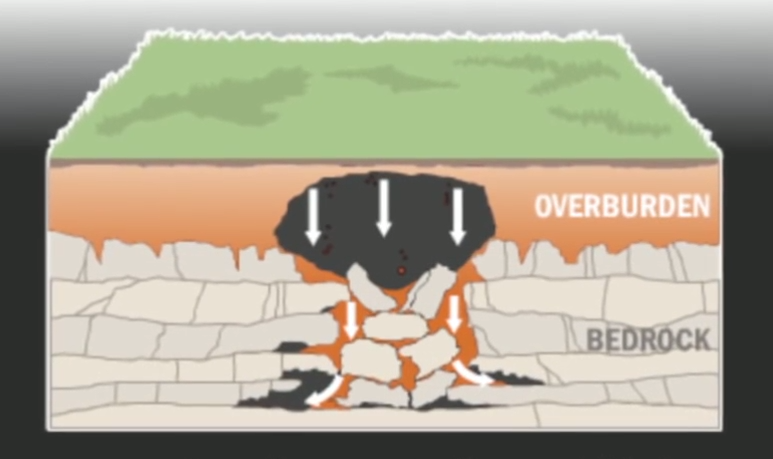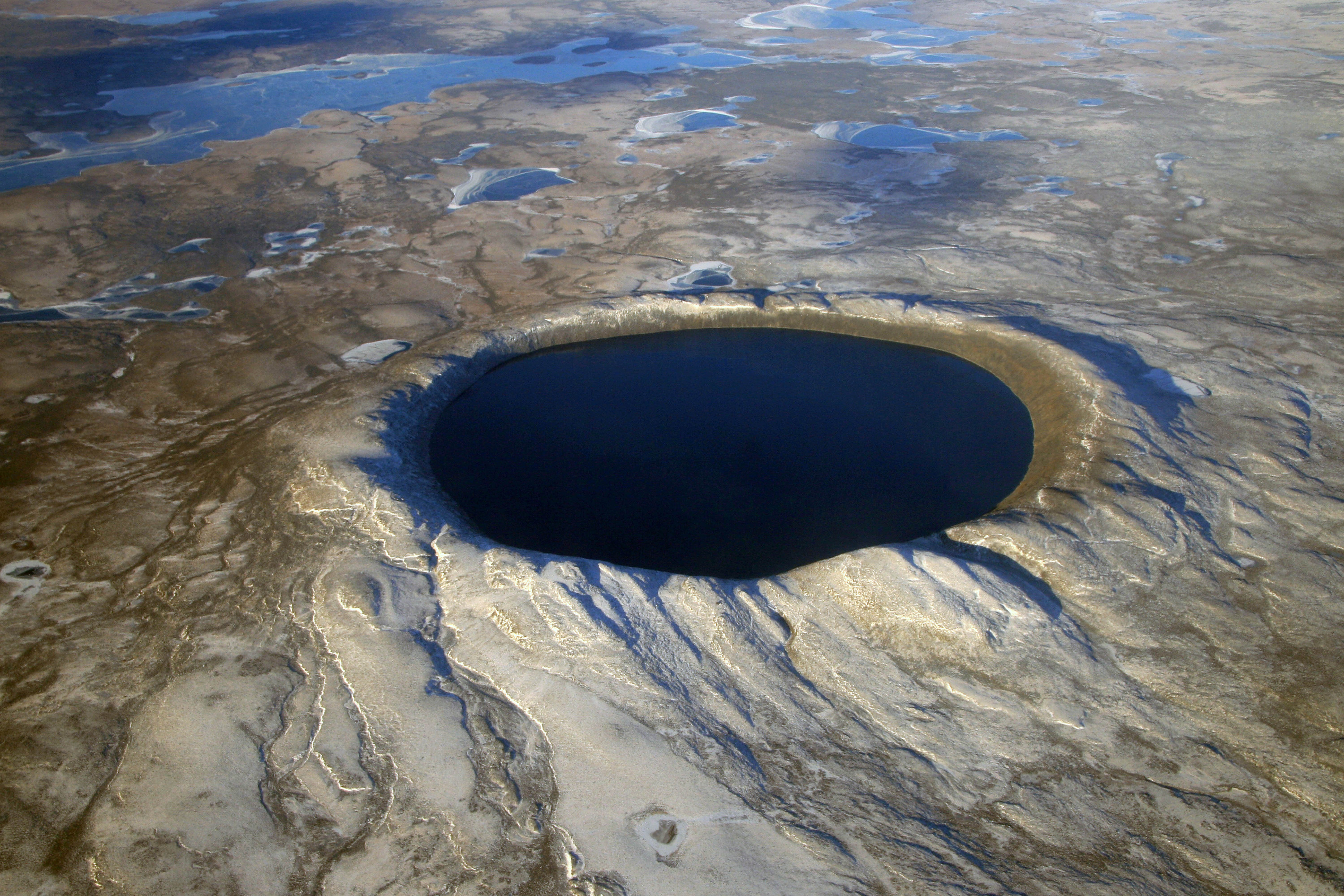Sinkholes are a natural disaster that can happen anywhere, at any time. You could be walking down the road and in a split second you fall through it into a massive hole to very likely, never be seen again. Sounds dark, but it does happen. Let’s find out how these holes randomly open up and swallow anything that crosses its path.

Sinkhole formation
There have been countless news stories of sinkholes forming and swallowing up entire buildings, people and even cars. In fact the one that caught my eye the most, was one that swallowed a man in his sleep. He woke up and called for help but he was long and gone soon after. How does something so random happen? We must first understand what erosion is.
Erosion
Erosion is simply the wearing down of rock. There can be several causes such as wind or ice glaciers; but there is nothing as good as water, at shaping the Earth [1]. Slow movement of water is incredibly powerful at eroding rock.
How does water erode rock?
There are many words and terms for how water erodes rock, which all depend on the situation. The type we are interested in is slow moving water. Generally speaking, as water travels over a rock, it picks up sediments from it which are tiny little rock particles [2]. Over time, this rock could wear down so much that it would look completely different to what it once was. The type of rock determines how fast it erodes, for example, limestone erodes very quickly.

Figure 1: Image showing how water can literally carve into rock by simply running over it after a period of time
How is erosion related to sinkhole formation?
The Earth’s crust is made of layers of different types of rock; the main ones being; overburden and bedrock. Overburden is a finer type of rock, and bedrock is the big tough ‘leg rest’ for the overburden. The layers are as follows – first we have the floor that we walk on; this rests on the over burden, which rests on the bed rock.

Image extracted from this video
How are sinkholes formed?
The problem with bedrock, is that it has a lot of cracks. When it rains - or if water pipes underground break and start leaking; water flows into these cracks and begins eroding the bedrock. Over time, a hole begins to form and the overburden begins to crumble down due to gravity to try and fill the holes.

Image extracted from this video
What now?
As you can see from the image above, the ground which we walk on starts becoming increasingly unstable. The more this overburden falls into the newly formed hole the more likely a sink hole will form. When the floor does collapse, anything on top of it will be engulfed no matter what.
This type of sinkhole is called a Cover-Collapse sinkhole. There are many other types but this happens to be the most common when it comes to randomly appearing holes.
Sinkholes can be more likely in areas where the bedrock is a type of rock that erodes quicker than other types; for example, Florida which has bedrock made of limestone. In Florida, sinkholes are a lot more frequent; so much that you can get sinkhole insurance cover for your house!

Sinkholes could be forming underneath you as we speak. In fact, there could be a hole hundreds of years old, getting bigger directly below you, which could cause one to happen right this instant. You will never know.
This news story is the same sinkhole that swallowed the man in his sleep, re-opening 2 years after it was first formed! Check it out.
About The Dark Side of Nature
Here I introduce you to a new series where I explain how different natural disasters occur. We are aware that they happen but a lot of us don't know how they happen, so this series will help you become the master at explaining anything to do with natural disasters to friends and family (if they care).
If you have any questions, ask them below and until next time, take care.
~ Mystifact
References:
[1] - http://teacher.scholastic.com/dirt/erosion/whateros.htm
[2] - http://www.erosionpollution.com/water-erosion.html
[3] - https://www.uky.edu/KGS/water/general/karst/kgeohazard.html
Please note; no copyright infringement is intended. All images used have been labelled for re-use on Google Images. If any artist or designer has any issues with any of the content used in this article, please don’t hesitate to contact me to correct the issue.
Relevant articles:
What Makes a Rainbow?
How to walk on water!
Why does the road look like it's WET on a hot day? The Physics behind a Mirage
Previous articles:
Why Can We See Through Glass?
How Do We Hear Sound?
Can a coin falling from the Empire State Building kill you?
Follow me on: Facebook, Twitter and Instagram, and be sure to subscribe to my website!
